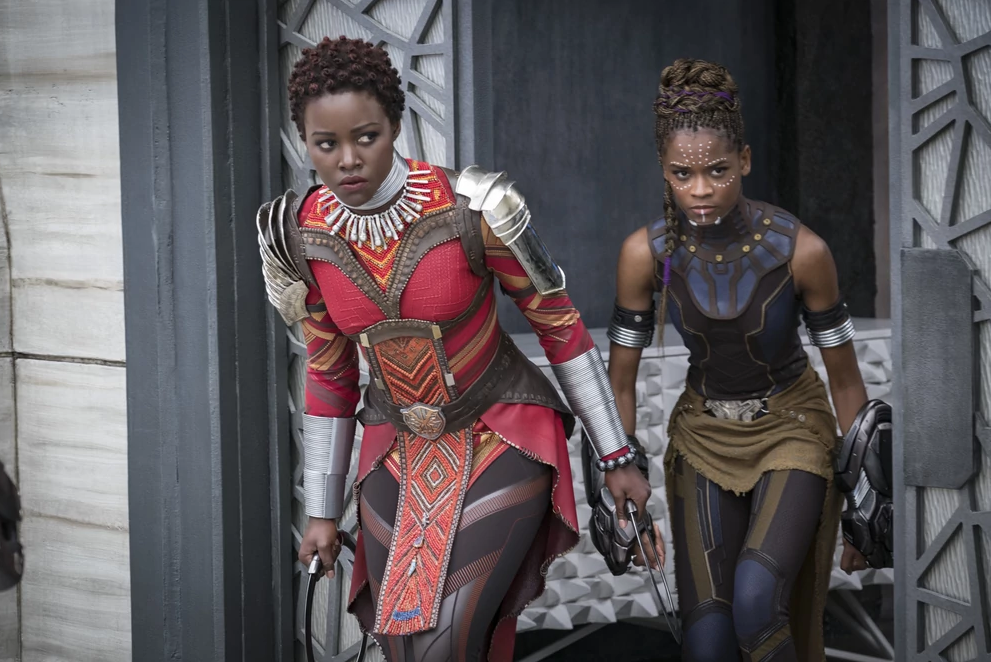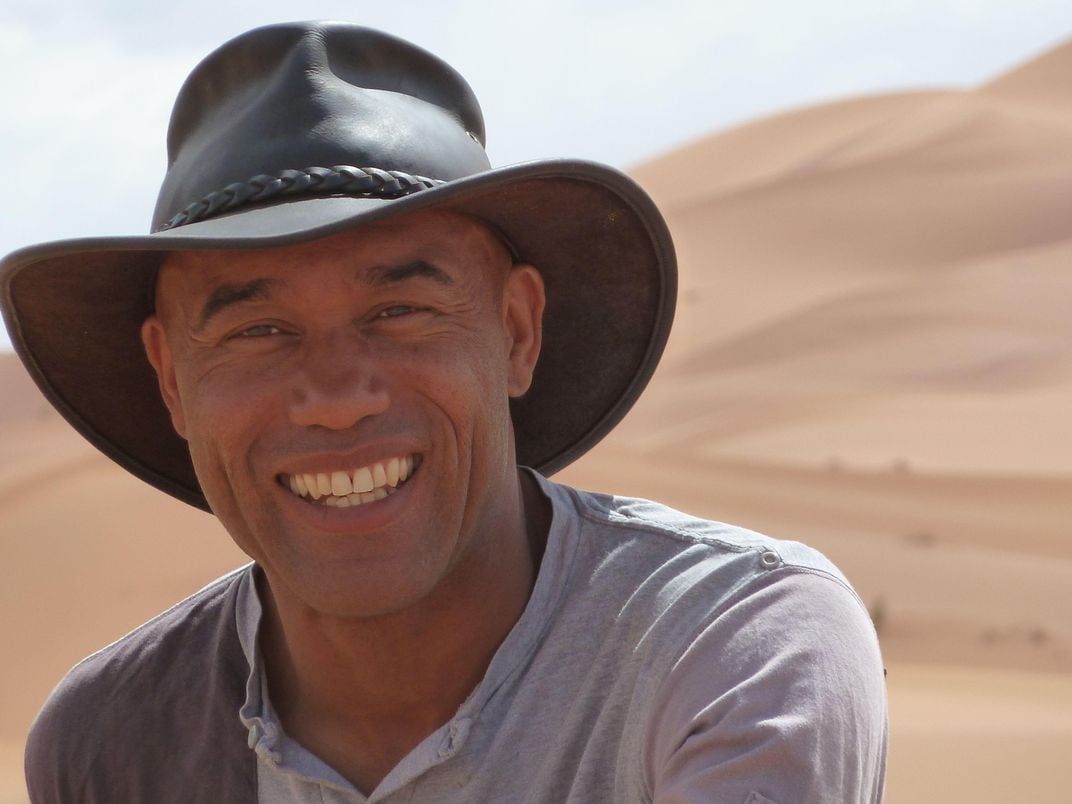The New Director of the Smithsonian’s African Art Museum Reflects on the Look and Fashion of Black Panther
The blockbuster movie borrowed from multiple African peoples to create a unique Wakandan style
:focal(515x160:516x161)/https://tf-cmsv2-smithsonianmag-media.s3.amazonaws.com/filer/46/0a/460a6678-8888-4f9a-9f82-a7cdc25b6098/screen_shot_2018-02-20_at_121407_pm.png)
Marvel Studios is prolific when it comes to filmmaking, with several superhero movies premiering in theaters each year. But rarely has a film garnered as much support from outside the comic-book world as Black Panther, which introduces a fictional African nation—and one of Marvel’s only headlining black superheroes—to the silver screen.
“We got a great story,” the movie's prestigious young director, Ryan Coogler, said at a recent pre-screening of the film held at the Smithsonian’s Lockheed Martin IMAX Theater. That sentiment was echoed by its acclaimed costume designer Ruth Carter, as well as its executive producer Nate Moore. They knew there were infinite stories to tell about the black experience, but when they looked to films coming out of Hollywood, they found a dearth of the depth and complexity they craved. With journalist and most recent Black Panther comic book writer Ta-Nehisi Coates moderating a panel discussion before a 400-person audience, the three spoke about how they approached their work for the new film as well as the meaning it has for them, and, they hope, for the African-American community.
Much of the conversation surrounded one of the most celebrated aspects of Black Panther: its dedication to representing real-life African culture and bringing together the African diaspora, all in a very fictionalized African world.
“Marvel deals in fantasy—fantasy so often heightens and concentrates what we know, but Black Panther chose to push the envelope, doing the necessary work to give [the film] a kind of cultural integrity that is some of what we might expect, but that is also so, so much more,” says the director of the Smithsonian’s National Museum of African Art Gus Casely-Hayford, who was also in attendance. “Coogler’s rich, confident Africa leaves you questioning what you thought you knew about the continent—and for a continent that is so often misunderstood, or misrepresented, that can only be good.”
Throughout the making of the action-packed film, Coogler worked to focus on the “real” Wakanda—the homeland of T’Challa, the man behind Black Panther’s bulletproof suit—and urged his team to capture the reality behind the imaginary.
For Carter, that meant finding inspiration in the tradition and costume of African peoples. She thrilled over Ndebele neck rings, Suri face paint, and Zulu headgear and blankets and asked her crew to stay true to these traditions. The costumes she designed for characters in the film are modeled after specific cultural traditions, taking care to maintain a level of historical accuracy when mixing influences.
“We felt we were doing something that was important and beautiful,” she says.
According to Carter, the characters’ costumes tell a unique cultural story. For example, the deep red worn by the Dora Milaje, the royal family's female guards, was sourced from a red clay and shea butter mixture worn by the sub-Saharan Himba people. Ramonda, T'Challa's widowed mother played by Angela Bassett, wears a headpiece modeled after those worn by married Zulu women.
“I spent significant passages of the film looking at the architecture and costumes,” says Casley-Hayford, “watching the gorgeous things happening on the periphery of the action, and thinking about what inspired them. It is very obvious that a huge amount of work has been done to create a world that has richness and integrity. But what I particularly liked was the idea that different peoples across the continent of Africa interacted—that ethnic groups were not separate and discrete entities.”

It was important to Carter that Black Panther portrayed African culture as dynamic—something that moves through time, and is not a relic of it. Celebrating modern black culture, Carter drew inspiration from a style movement called Afrofuturism, which embraces contemporary fashion while paying homage to tradition and heritage. Armed with digital design software and 3D-printers, Carter and her team of more than 30 designers and buyers created the unique Wakandan style—a high-fashion, futuristic blend of African-inspired prints and superhero-chic silhouettes. It proclaims "we're not falling into any kind of mold of the way things should be. We’re going to create our own," Carter told The Atlantic.
“What [Carter] does, what we do at the National Museum of African Art, is not just about helping us to fill a void in a wider knowledge,” Casely-Hayford says. “It is helping to right the wrong of wider formal education and culture that so often forgets or diminishes the contribution of Africa. And both submerge us in beautiful, complex and uplifting African worlds.”
The film, which is “diasporic in its conception,” according to Coates, embraces the expanse of African influence. While Wakanda is impossibly secluded and untouched by colonialism, masquerading as a stereotypically poor African country to conceal its incredible wealth, characters across the globe still feel its impact. Even the actors representing those fictional characters embody the reach of African culture: hailing from the United States, the United Kingdom, Mexico, Guyana and beyond, their roots span across the African continent. In bringing together this cast and outfitting them in African attire, Black Panther promulgates the idea of pan-Africanism—simultaneously representing the diversity of Africa and honoring what brings it together.
“We as African-Americans have belonged to this the whole time,” Coogler says. “In many ways we are the furthest reach of the diaspora… We are positioned all over the world. We're still African.”
While that’s a conclusion Coogler emphasizes now, it wasn’t one he came to immediately. Growing up, he often found himself searching for affiliation but split between incomplete identities.

“I think as African-Americans you feel like you're neither African or American. You're neither thing fully,” Coogler says. “For me, this film was about finding the African part.”
In doing so, he found that the two were not nearly as disparate as he once thought. When he traveled around the African continent conducting research for the film, he realized that certain aspects of African-American culture—dress, language, and even seemingly banal habits, like young men gathering to socialize outside the home—has roots in Africa. But some of those practices which are often looked down on in American society are embraced in Africa— something he and the others who worked on the film hope to incorporate in their work and life.
“I want to honor my culture,” Carter says. “I want to honor my past. I want to look at myself and look at others in a way that's honoring them and where they're from.”
That sentiment—one of pride and radical cultural celebration—extends beyond the African-American community. “That sense of African ideas flowing across geography and time are powerfully evident in Black Panther, of ancient beliefs inspiring futuristic technologies, of peoples from West and North Africa having an impact on those from the South and East,” says Casely-Hayford. “African cultures remain dynamic, this is a continent exploding with ideas that have inspired intra-continental and global thinking.”
While Coogler expected to see fellow African-Americans wearing traditional dress to premieres of a film that embraces it, he was pleasantly surprised to see premiere attendees around the world—with ancestries from Mexico to Malaysia—honoring their culture in the same way. If Africans, who have been made to feel ashamed of their heritage can be “proud of it and rock it,” he says, “it would inspire other people to do the same thing. It already has.”
Tickets available for Black Panther thru March 1 at the Lockheed Martin Theater in Washington, DC and the Airbus Theater in Chantilly, Virginia. Current exhibitions on view at the Smithsonian’s National Museum of African Art include “Water in African Art,” “Healing Arts,” and “Jim Chuchu’s Invocations,” among others.
/https://tf-cmsv2-smithsonianmag-media.s3.amazonaws.com/accounts/headshot/2018-01-17_07.39.24_2.jpg)
/https://tf-cmsv2-smithsonianmag-media.s3.amazonaws.com/accounts/headshot/spengler_headshot.png)

